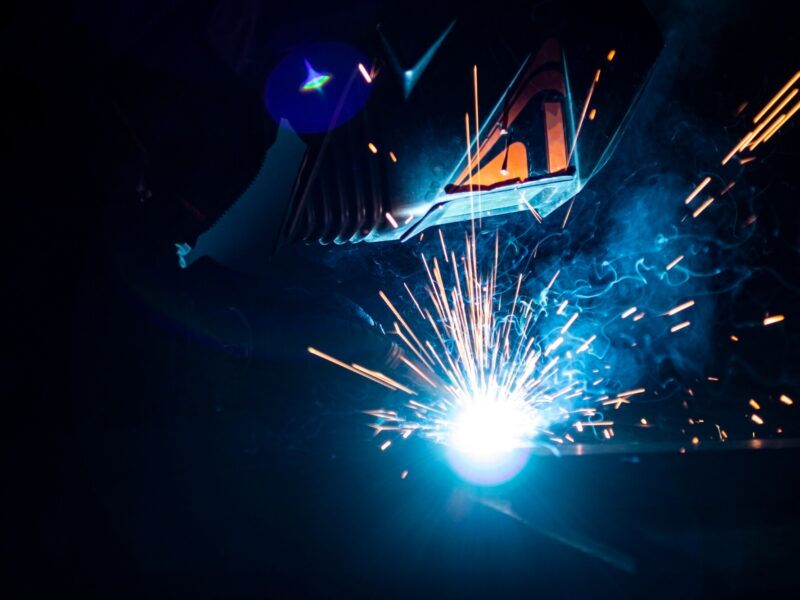Exactly How to Avoid Weld Undercut: Important Tips for Welders
Exactly How to Avoid Weld Undercut: Important Tips for Welders
Blog Article
Mastering the Art of Welding: How to Avoid Undercut Welding Issues for Flawless Construction Outcomes
By recognizing the origin triggers of undercut welding and executing effective strategies to stop it, welders can raise their craft to new degrees of excellence. In the pursuit of remarkable construction results, understanding the art of welding to stay clear of undercut problems is not just an ability however a necessity for those making every effort for excellence in their work.
Recognizing Undercut Welding

To protect against undercut welding, welders need to ensure proper welding specifications, such as changing the present, voltage, traveling rate, and keeping the proper electrode angle. By recognizing the causes of undercut welding and implementing preventive steps, welders can accomplish premium, structurally sound welds.
Causes of Undercut in Welding
Understanding the elements that contribute to undercut in welding is important for welders to produce top quality, structurally sound welds. When the weld steel does not correctly fill the groove formed in between the base steel and the formerly deposited weld steel, undercutting occurs. A number of elements can bring about undercut in welding. One usual reason is excessive heat input. Welding at high temperatures for extensive durations can result in the base steel thawing more than wanted, bring about undercut. Inadequate welding incorrect or existing welding speed can likewise add to damage. Inadequate current might not supply enough warmth to melt the base and filler steels adequately, while too much speed can protect against appropriate fusion, triggering undercut. Additionally, inappropriate electrode angles or incorrect lantern manipulation strategies can create locations of low weld metal deposition, advertising undercut. Comprehending these reasons and executing correct welding techniques can aid prevent damaging concerns, making sure sturdy and strong welds.
Techniques to Avoid Undercutting

To minimize the risk of undercutting in welding, welders can employ tactical welding techniques aimed at improving the high quality and stability of the weld joints. One efficient technique is to change the welding specifications, such as voltage, present, and travel speed, to guarantee appropriate warm input and deposition. Preserving a suitable electrode angle and guaranteeing consistent travel speed can additionally aid protect against undercut. In addition, making use of the proper welding technique for the details joint arrangement, such as weave or stringer grains, can add to decreasing undercutting. Preventing weld undercut.
Furthermore, correct joint preparation, consisting of making sure clean base products devoid of pollutants and utilizing the suitable welding consumables, is crucial in protecting against undercut flaws. Employing back-step welding strategies and controlling the weld grain account can additionally assist disperse warm equally and reduce the threat of undercut. Routine examination of the weld joint during and after welding, along with executing quality control actions, can aid in resolving and spotting damaging issues quickly. By applying these techniques vigilantly, welders can attain flawless construction results with very little undercut issues.
Value of Appropriate Welding Specifications
Choosing and preserving proper welding specifications is necessary for attaining effective welds with very little flaws. Welding specifications refer to variables such as voltage, present, travel rate, electrode Go Here angle, and securing gas circulation her latest blog price that directly impact the welding process. These criteria have to be meticulously changed based on the sort of product being bonded, its thickness, and the welding technique used.
Correct welding specifications guarantee the correct amount of warmth is used to thaw the base metals and filler product evenly. If the specifications are set expensive, it can bring about extreme heat input, creating distortion, spatter, or burn-through. On the other hand, if the specifications are too reduced, incomplete blend, lack of infiltration, or undercutting might happen.
Quality Guarantee in Welding Operations

Verdict
To conclude, mastering the art of welding requires a comprehensive understanding of undercut welding, its causes, and techniques to avoid it. By making certain correct welding criteria and carrying out quality control practices, flawless manufacture outcomes can be accomplished. It is important for welders to consistently pursue quality in their welding operations to avoid undercut concerns and create premium welds.
Undercut welding, an usual flaw in welding processes, takes place when the weld metal doesn't effectively fill up the groove and leaves a groove or depression along the bonded joint.To stop undercut welding, welders ought to ensure correct welding specifications, such as adjusting the present, voltage, travel rate, and maintaining the right electrode angle. Inadequate welding wrong or current welding rate can also add to undercut.To alleviate the risk of damaging in welding, welders can use tactical welding strategies aimed at boosting the quality and stability of the weld joints.In verdict, mastering the art of welding calls for a comprehensive understanding of undercut welding, its reasons, and techniques to avoid it.
Report this page